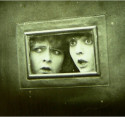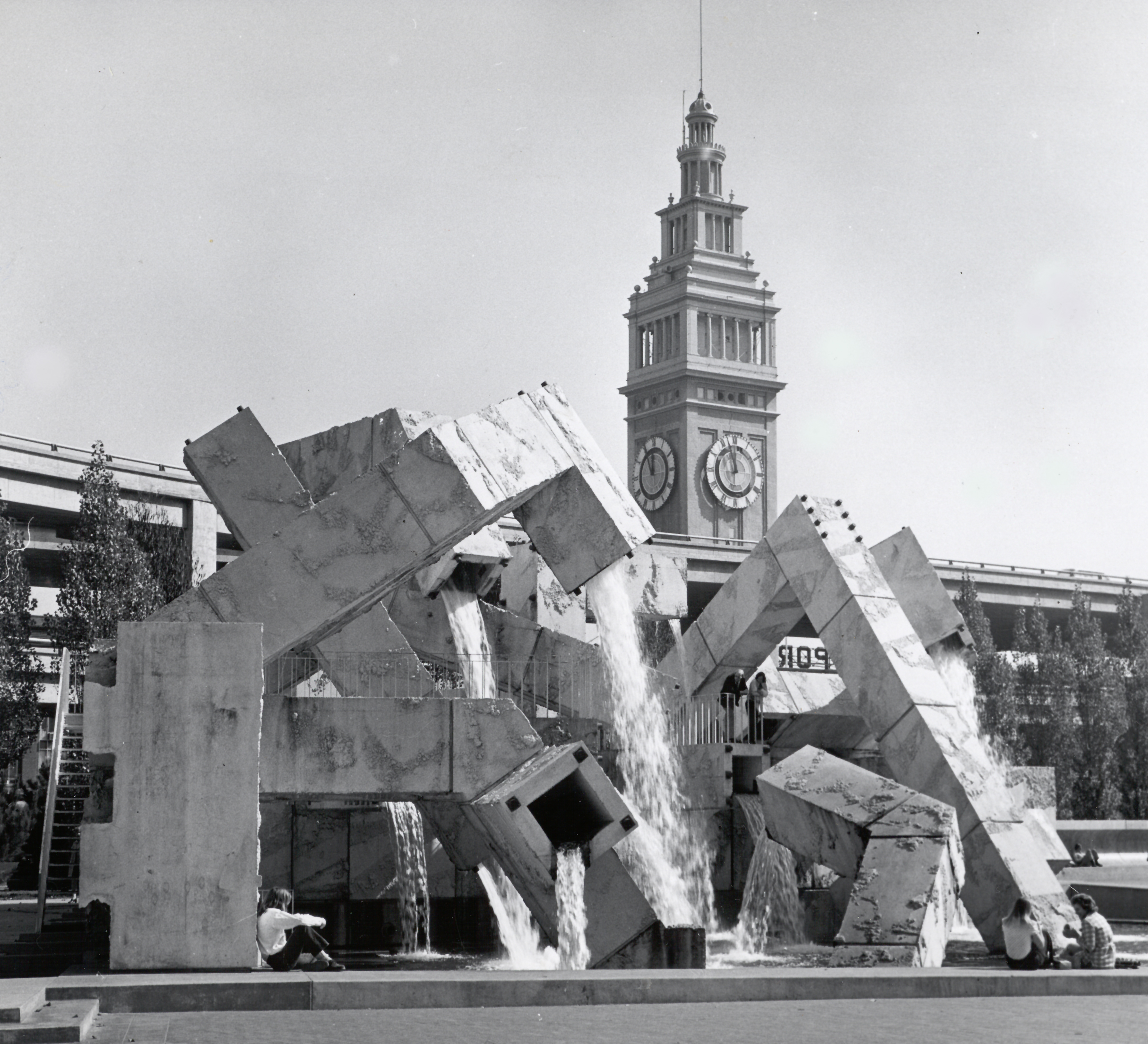
Viva La Roxie
By Sura Wood
The Roxie Theater is planning to purchase its building, invest in technology upgrades, and expand programming

When I first walked into the Roxie Theater years ago, I encountered an engaging, immensely articulate, movie-savvy fellow with wildish dark hair and studious, black-framed glasses, manning the popcorn machine. The man behind the counter, I learned, was Elliot Lavine, the theater’s irreverent, flat-out brilliant director of repertory programming (1990-2003; guest programmer 2009-15) who revived notorious cult films and curated noteworthy annual film noir and pre-code Hollywood series during his tenure. The stimulating conversation we had that day was the beginning of my lasting affection for the place. This recollection was triggered by the news that the theater’s complex on 16th Street, comprised of the 233-seat Big Roxie, the mini 47-seat Little Roxie and the space occupied by Dalva Bar, is on the verge of being wholly owned and operated by the Roxie; finally, a permanent home and a piece of the planet they can call their own. The deal is expected to close by the end of the year.
“Owning our building will be transformative for the Roxie Theater and essential to our future as a vital part of San Francisco’s cultural and cinematic landscape,” says Lex Sloan, a filmmaker who started as a fan of the theater and went on to become its Executive Director in 2019. “It will allow us to continue taking artistic risks and more than anything, secure our legacy. The Roxie has thrived because it’s always been more than just a movie theater — it’s a community hub.”
Credit for that “more than just a movie theater” feeling goes, in part, to the dynamic and quick-witted, longtime programmer and publicity director, Rick Norris, who, Lavine told me recently, is responsible for creating “a wild and highly energetic work environment” in an office space that, for a while, was located in the projection booth. “After 35 years, Rick remains a huge part of what holds the Roxie together.”
“It has been one helluva of a ride,” concedes Norris. “Packed with a hair-raising series of boom-and-bust cycles and a parade of insanely courageous cinephiles throwing every fiber of their body and soul into keeping the bloody doors open.”
The theater is one of the oldest, continuously operated cinemas in the country, with a storied history dating back to 1913, when it opened as the Poppy Theater (the proprietor was a jeweler seeking a radical career change). Prior to emerging as the Roxie in 1933, the building went through a number of names and iterations — including a stint as a "porn palace” in the late 60s and early 70s.
A long way from the sterile, fancy pants cushiness of the multiplex, though not without its creature comforts, the independent-minded, non-profit theater has meant — and continues to mean — a great deal to the community, including myriad festival directors, who screen programs there, local filmmakers, and a diverse swath of audiences, from certified movie aficionados to younger newbie enthusiasts discovering the pleasures of repertory cinema.
“We have lost so many theaters in San Francisco, especially art houses but mainstream theaters, too,” observes Jeff Ross, who, since 1999, has regularly shown a half-dozen of his edgy fests at the Mission District venue, including SF Indiefest, Another Hole in the Head, and the DocFest (May 29-June 8) “At the moment, the Roxie and CinemaSF are the only independent theaters in town that keep a full calendar of film screenings. They are a treasured resource we are lucky to have. We have been there for all their ups and downs, mostly downs, as they struggled to stay afloat financially. It's wonderful to see they are poised to stick around for the long haul,” says Ross.
However, staying afloat for independent film and exhibitors has become increasingly perilous with the sudden shift in federal funding directives; a $20,000 grant from the National Endowment for the Arts, which supported RoxCine, their Spanish-language series, was withdrawn in early May. Additionally, the threat of 100% tariffs on foreign films, which may prove to be illegal, could endanger a theater where over half the programming is international.
A key to the Roxie’s longevity has been its supportive relationships with local filmmakers such as Jenni Olson, a Berkeley-based queer film historian and archivist whose work was featured in a retrospective there in April. “The Roxie’s ethos has always been so unique,” she says. “It’s a movie theater for the community in a deeply committed way. When I think of the Roxie, I think of its sense of heart. As a filmmaker, I’ve always have felt not only their appreciation but also their partnership. They make us feel at home. I have many memories of this from showing my films there over the decades.”
“I have been welcomed back multiple times,” says indie director Rodrigo Reyes (“Purgatorio”), and I've witnessed a full house for Tarkovsky's "Stalker" and cried with a packed audience watching "In the Mood for Love." I've had some of my best conversations with audiences there.”
In an average year, the theater screens over 500 eclectic titles, a mix of classics and often unusual, sometimes transgressive first-run releases as well as tributes such as the recent one honoring the late David Lynch. It has played host to an equally eclectic roster of guests, from Boots Riley, Barry Jenkins. John Waters, Phil Tippett, Walter Murch, William Friedkin and Abel Ferrara to Phil Kaufman and Quentin Tarantino, a known champion of historic theaters. Then there’s its film noir programming, a specialty of the house and a potent audience draw.
“Film noir is a dirty, lowdown style, best served up in a somewhat seedy, unadorned environment,” opines Lavine, whose “Resistance Film Festival” had a Roxie run in January. “There’s nothing particularly festive about film noir, and I think our shows at the Roxie proved that, instilling a sense of integrity for these gritty, often godforsaken films. Being able to present these films in exactly the way I wanted — with the emphasis on the tawdrier, somewhat rougher-around-the-edges examples of what the style had to offer, and not just the time-honored classics, seemed to hit the right note. The de-glamorization of Hollywood through its most inventive artistic movement appealed to the Roxie crowd and the theater managed, all through the 90s and beyond, to become ground zero for film noir in the Bay Area.”
“The Roxie was the only place in America that was willing to give my ultra-rare French noir series a chance,” recalls Don Malcolm, the author and self-described renegade repertory programmer who originated the intriguing, provocatively titled series, “The French Had a Name For It.” “Thanks to their support I was able to extend the series across 10 years. A total of 155 films, including 52 that were screened theatrically in America for the first time, form a legacy that evolved from "sexy French noir" into a definitive chronicle I've dubbed ‘a lost continent.’”
Having survived for over a century, the theater now finds itself contemplating a newfound freedom and a hopeful future. ”We are a living reminder that community-based arts can endure. That underdogs can win. That culture matters. And that if we work together, we can build something lasting,” says Sloan.
From the Roxie:
For the last year, we have been privately pursuing a big goal: to raise $7 million to purchase our building, invest in technology upgrades, and expand our programming, ensuring that The Roxie remains a cherished and thriving institution in SF for the long haul.
We are closing in on our goal and only have $1.5 million left to raise, thanks to early support and enthusiasm of our community and generous donors who care deeply about San Francisco film culture. Now, we’re calling on everyone who values the creative, independent, community spirit the Roxie represents to help us achieve this goal and secure the future of the Roxie forever.
Help The Roxie reach its goal but making a donation here



